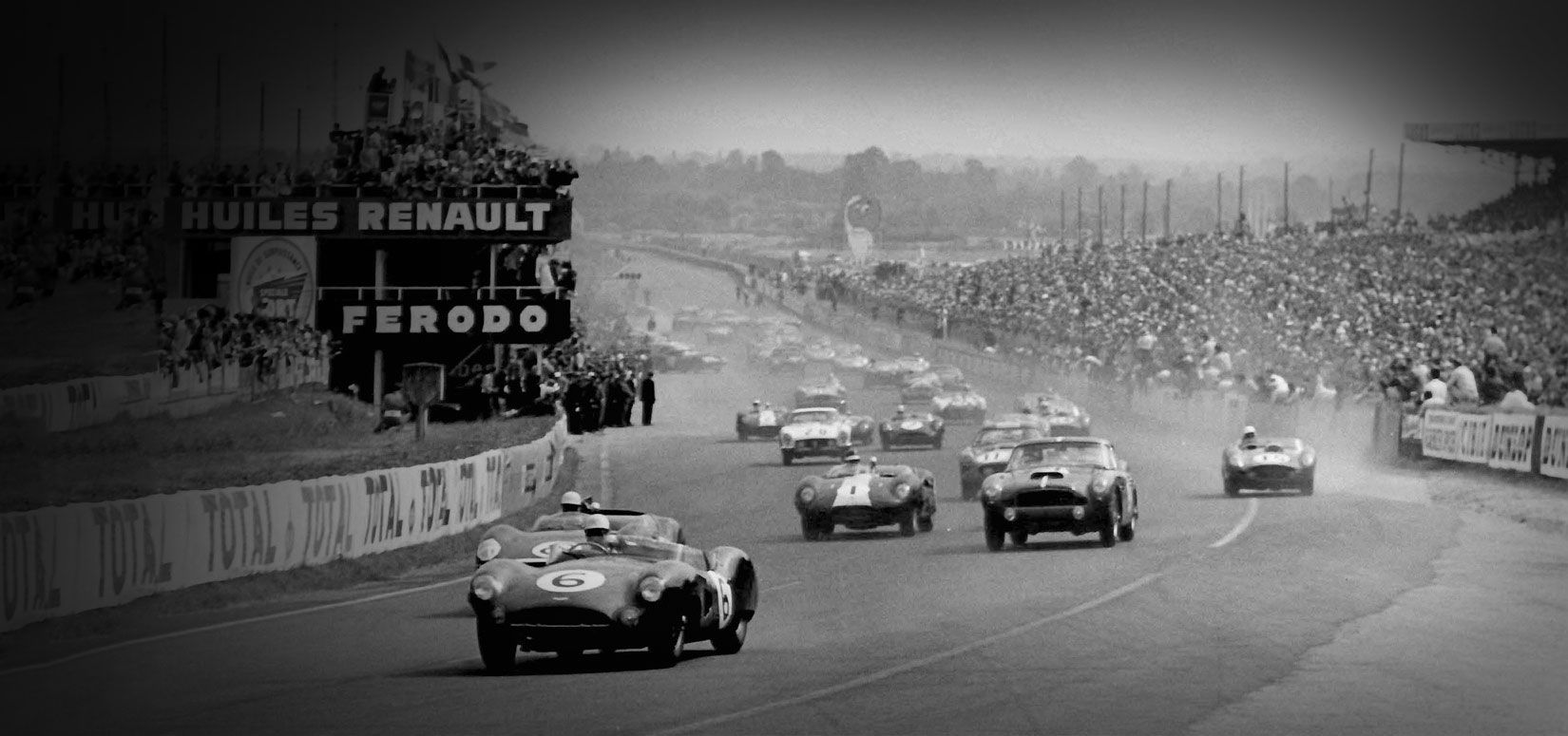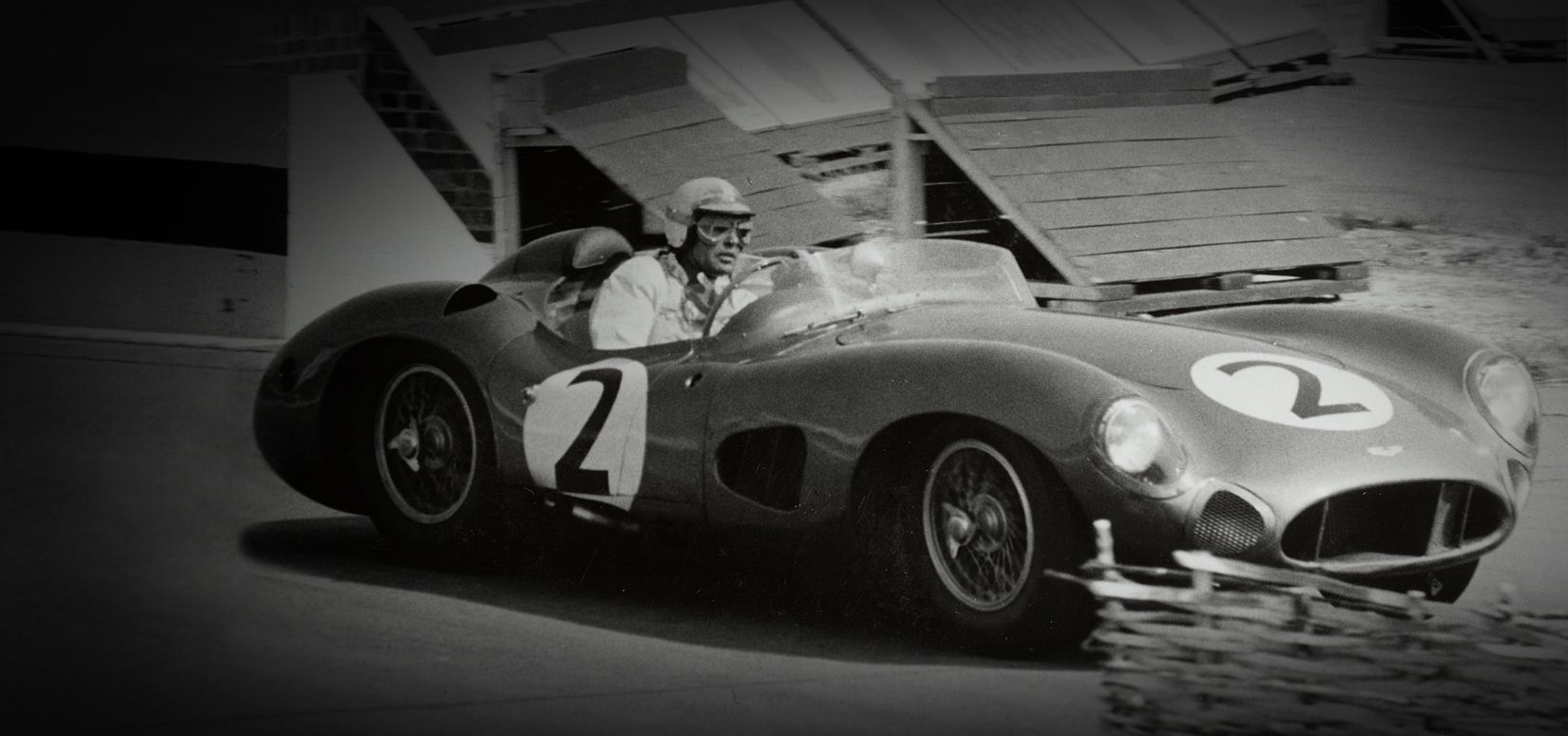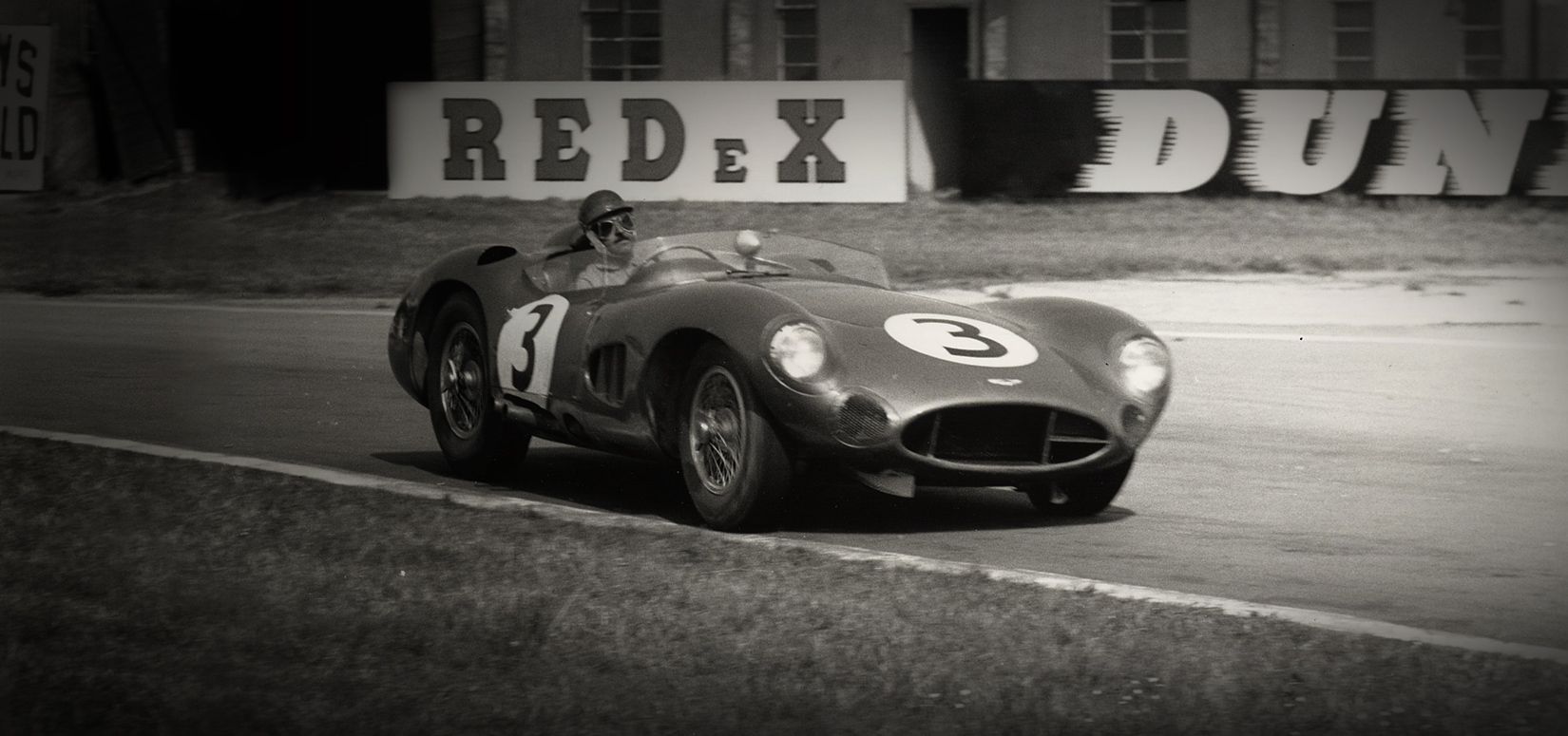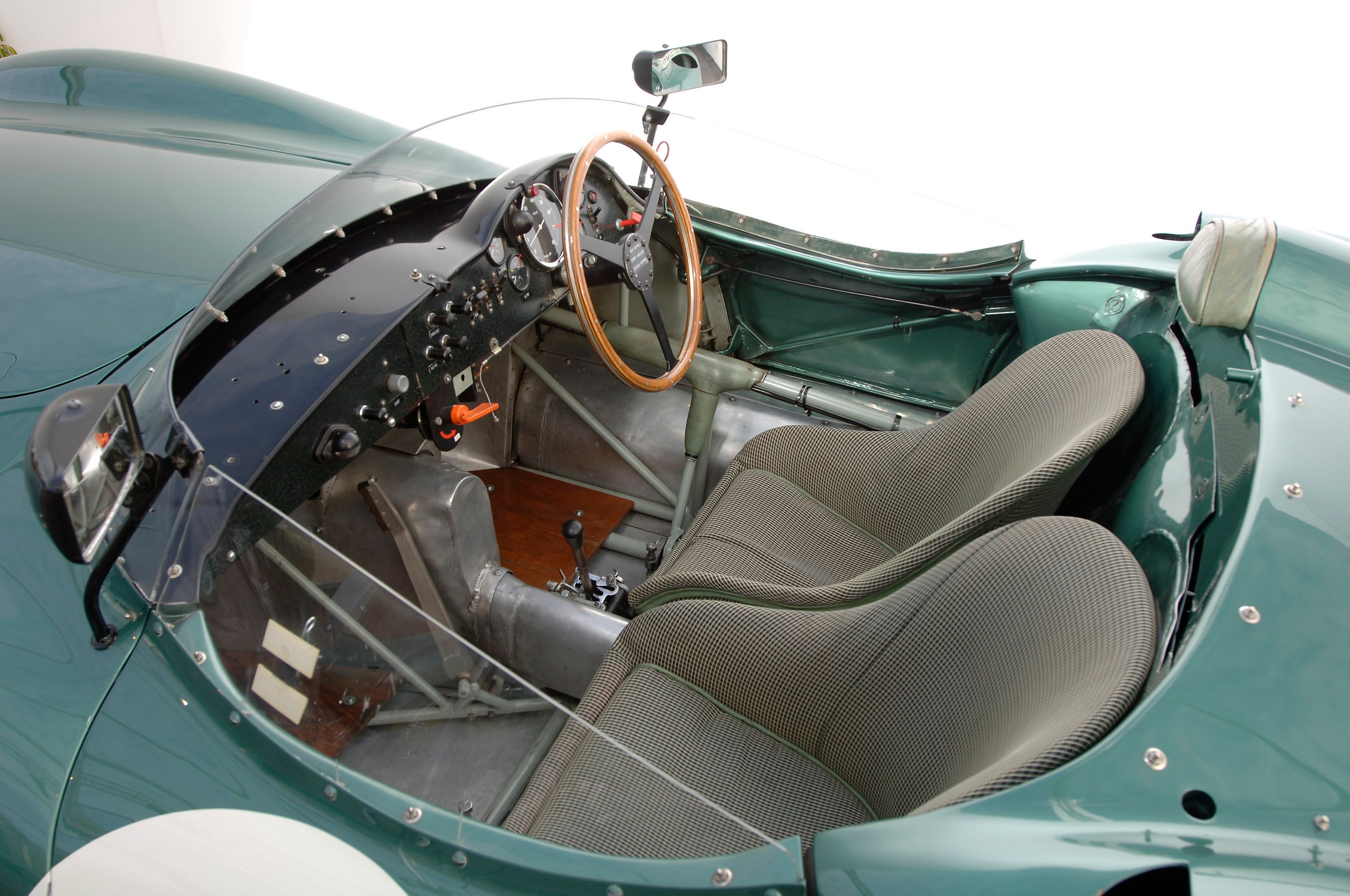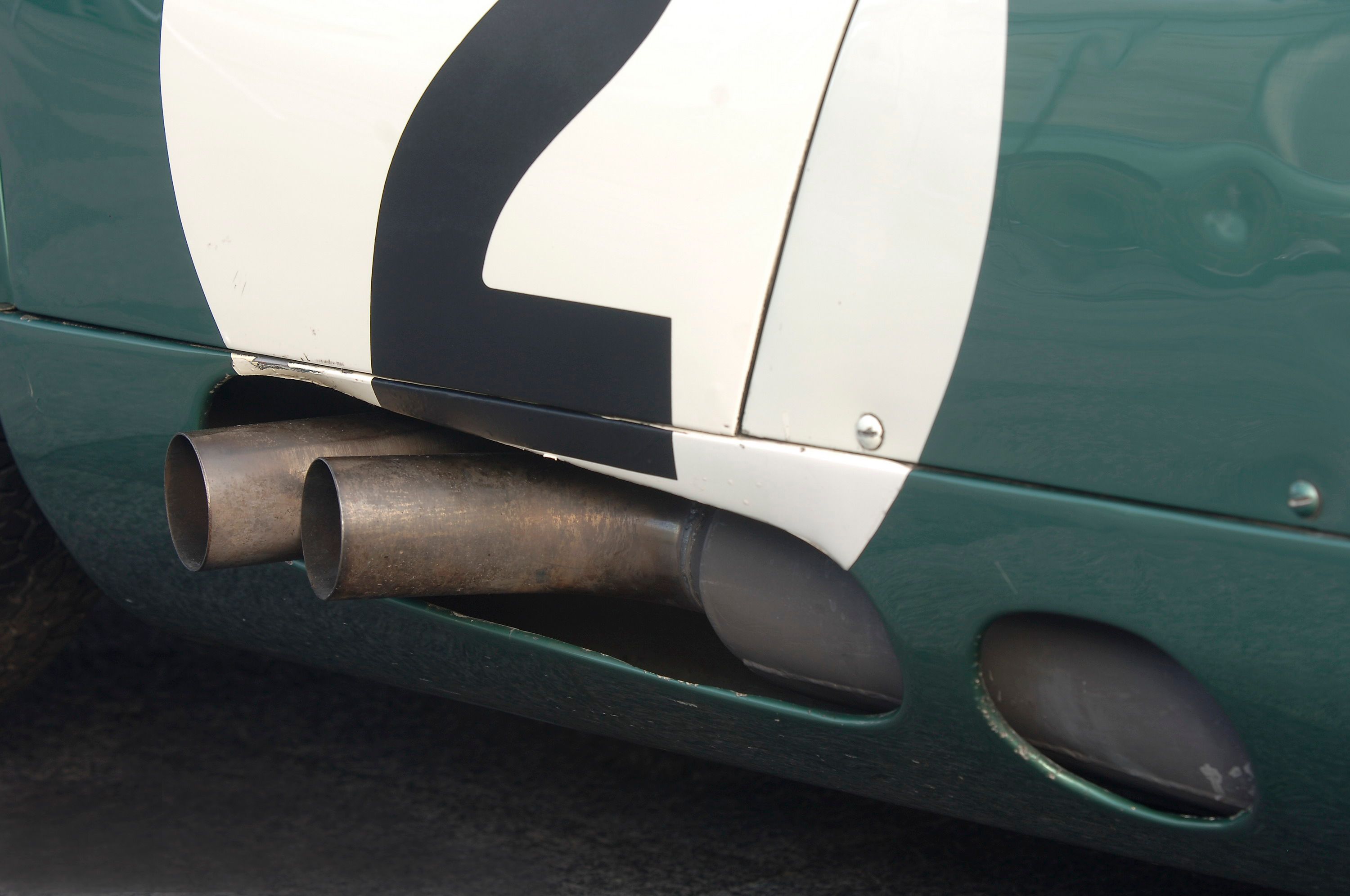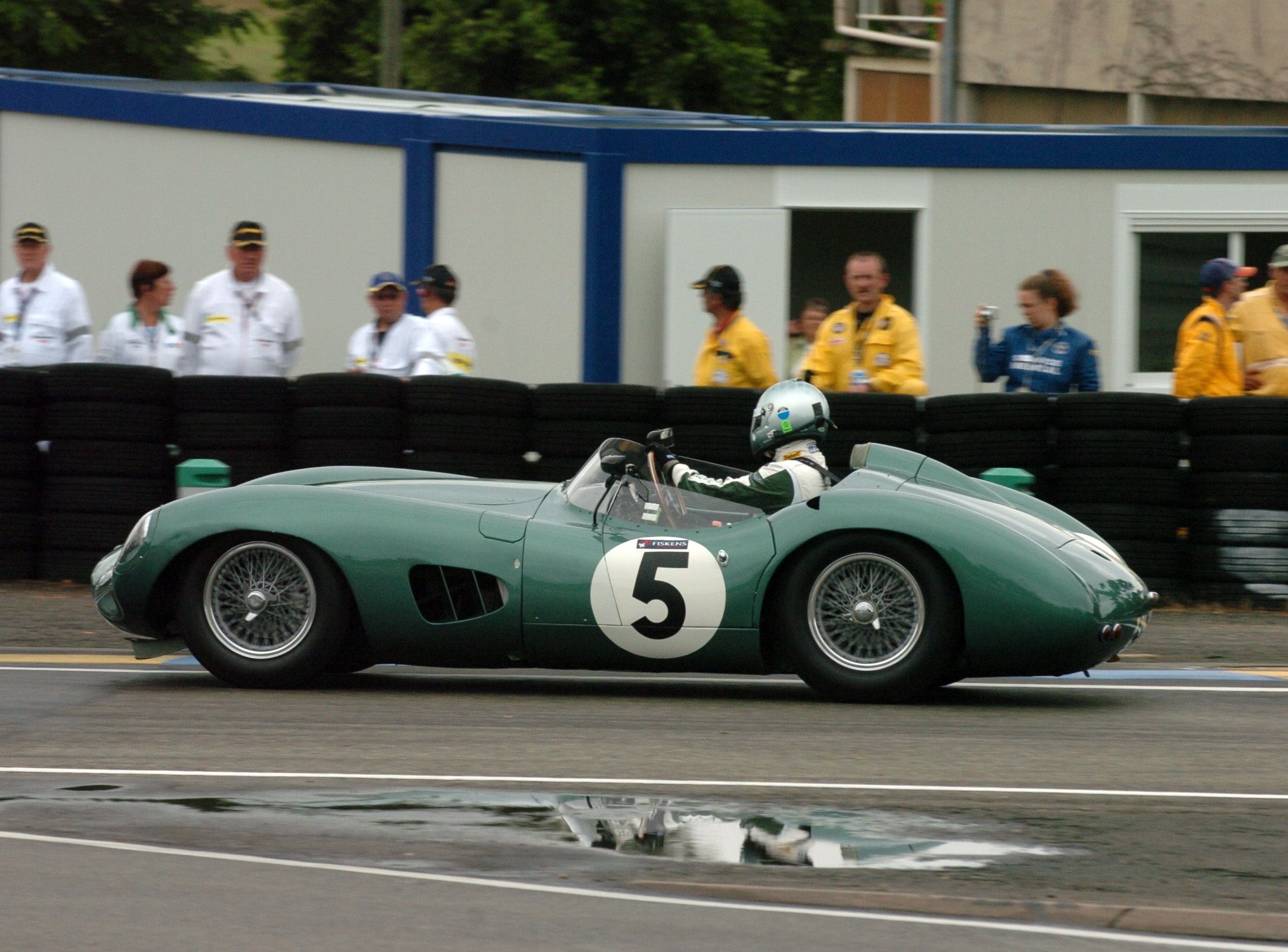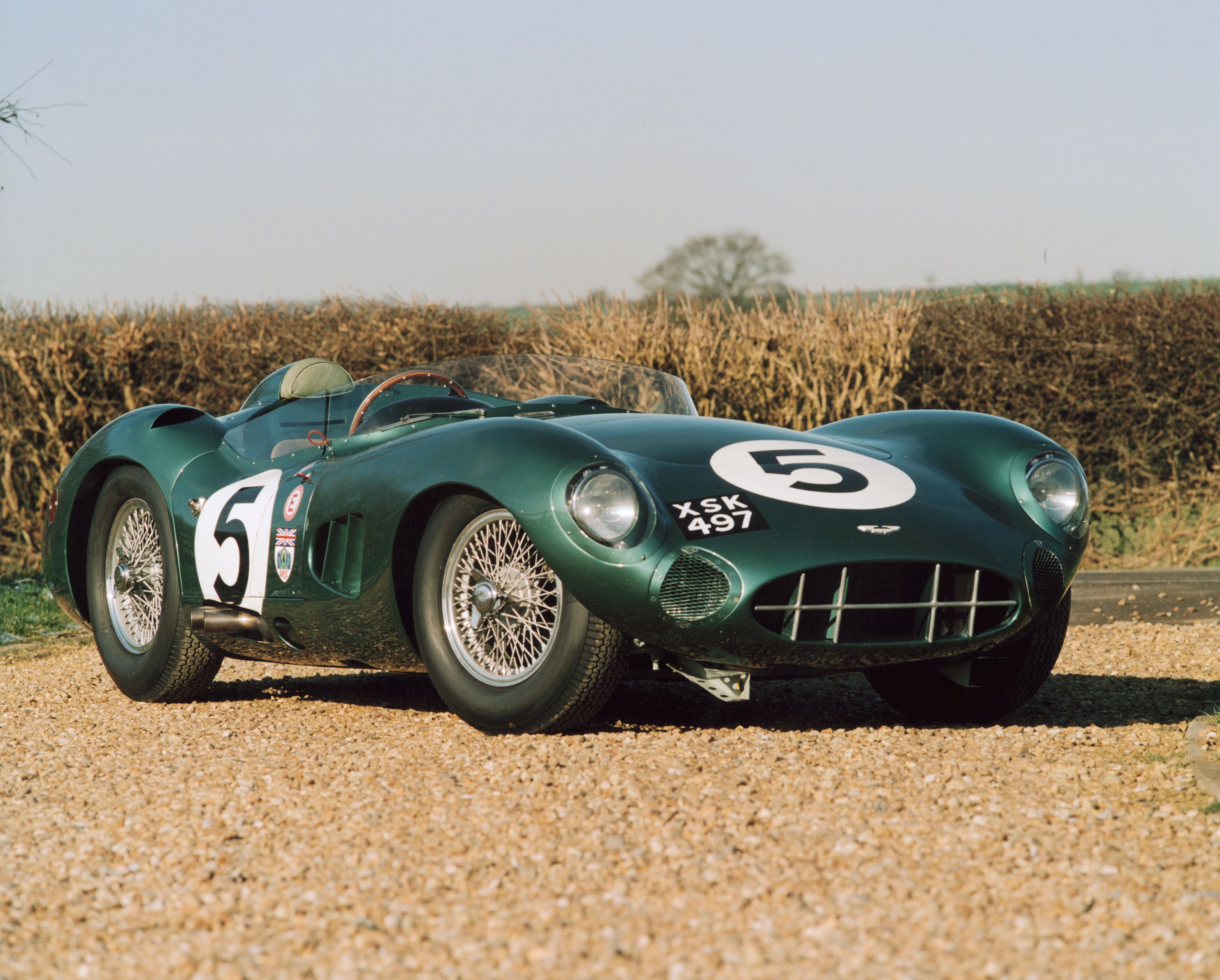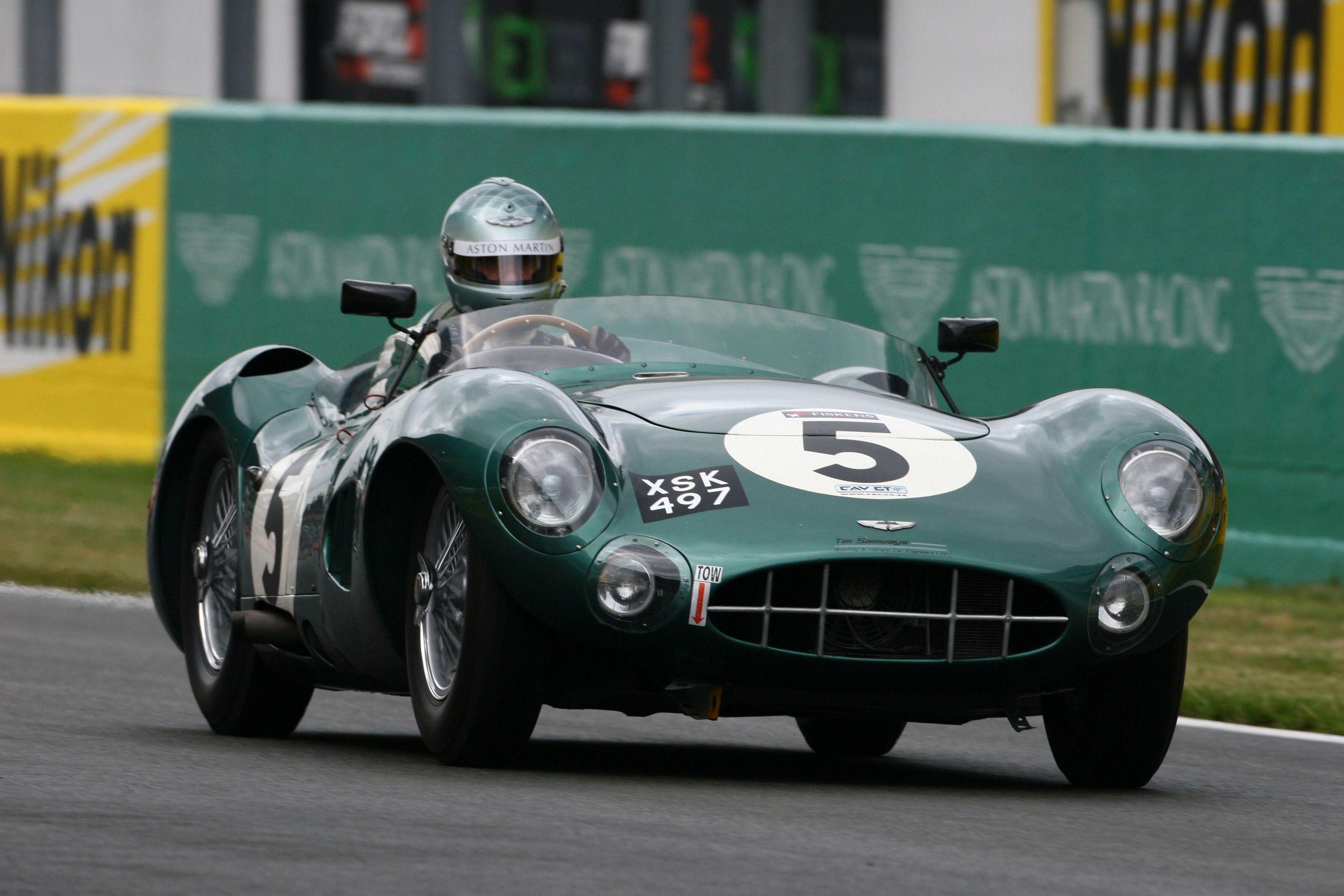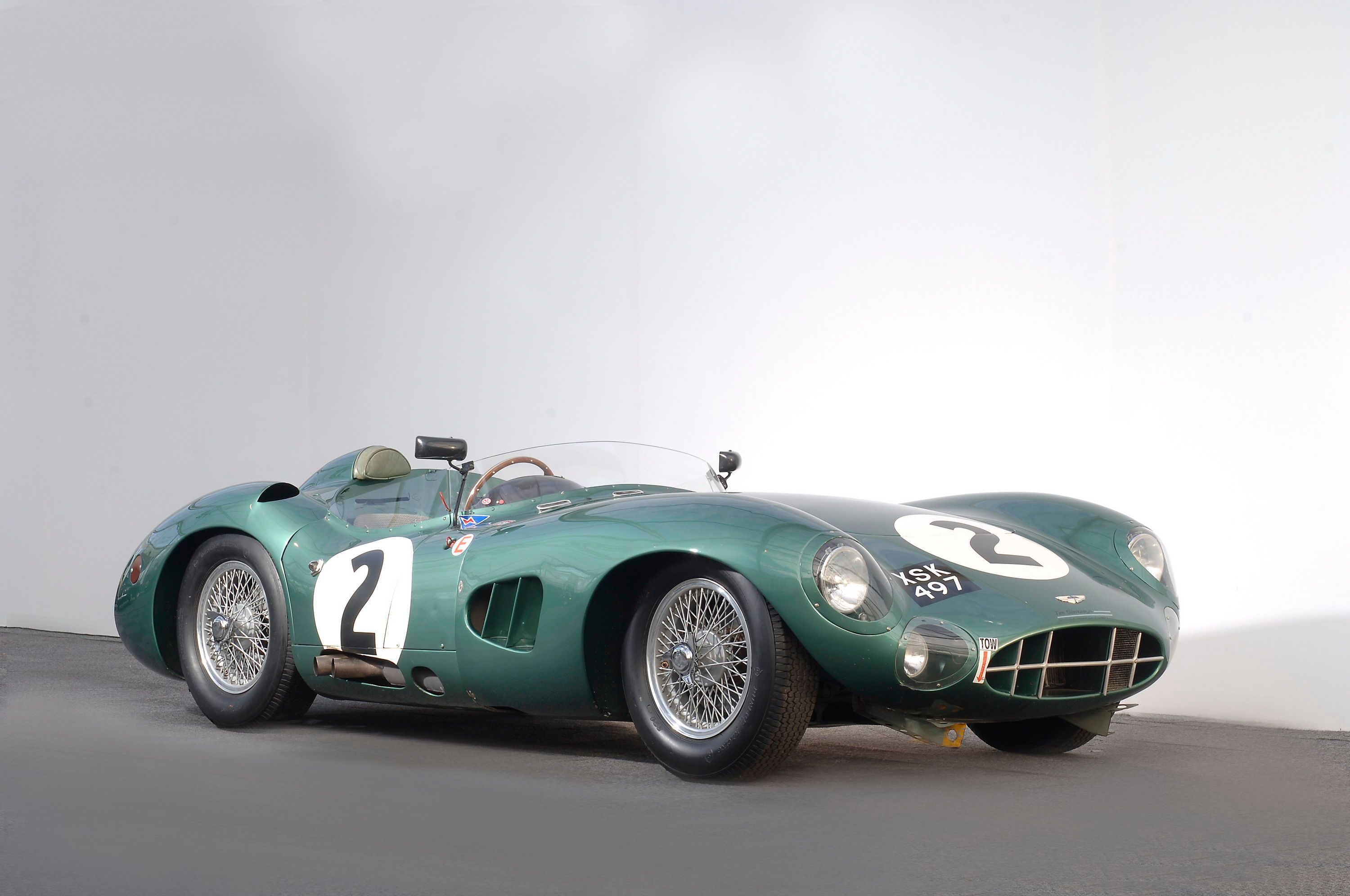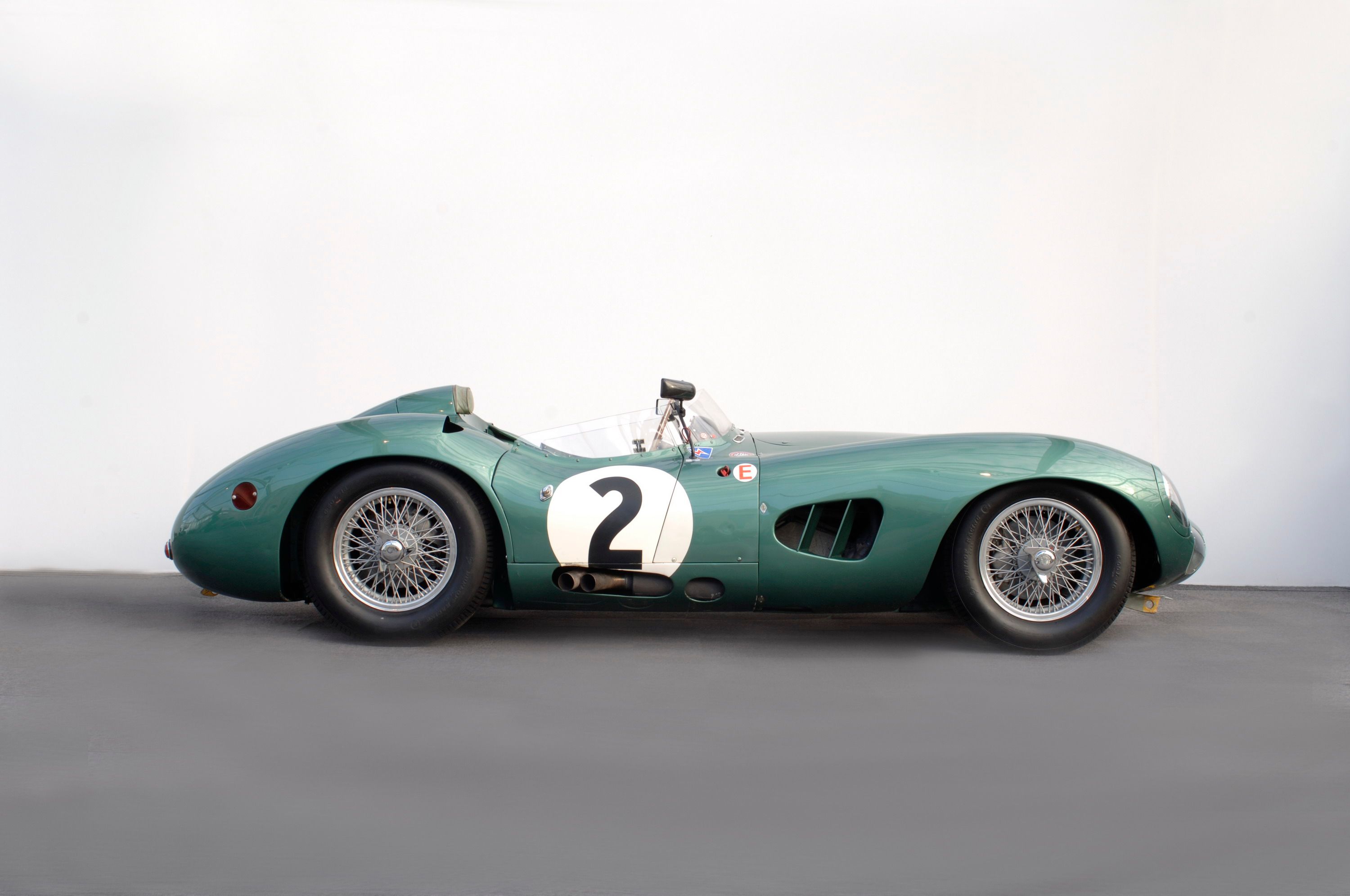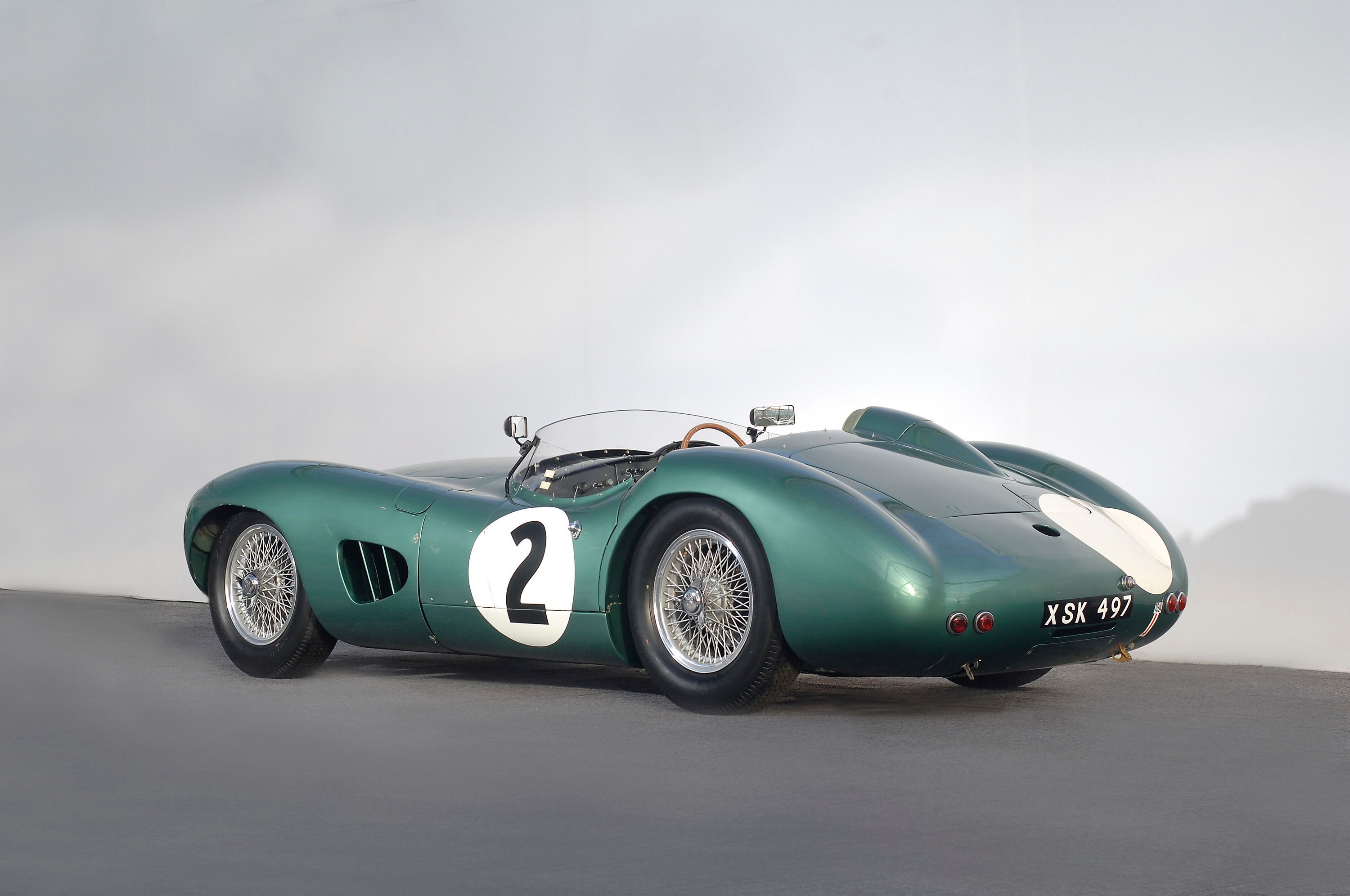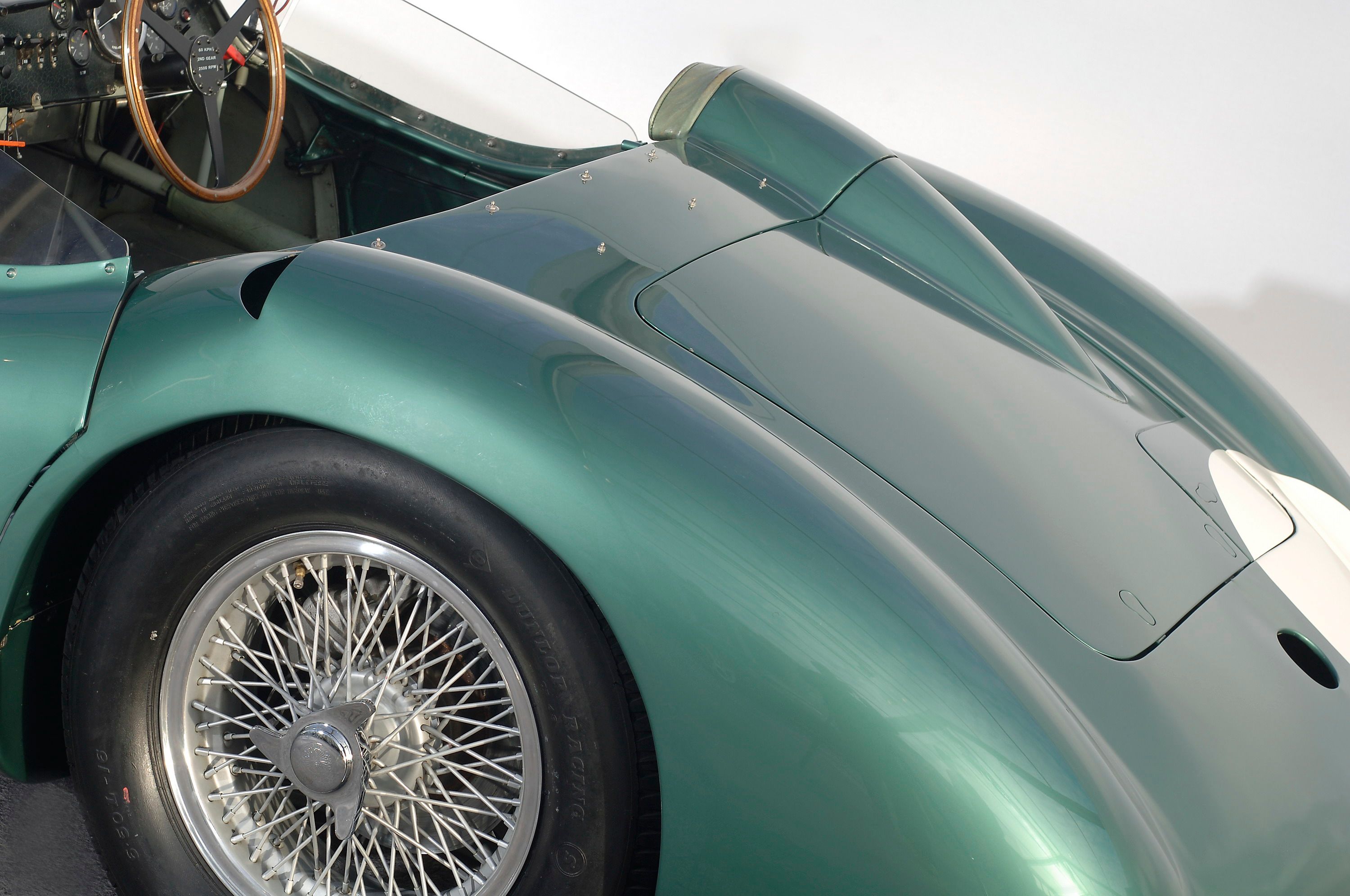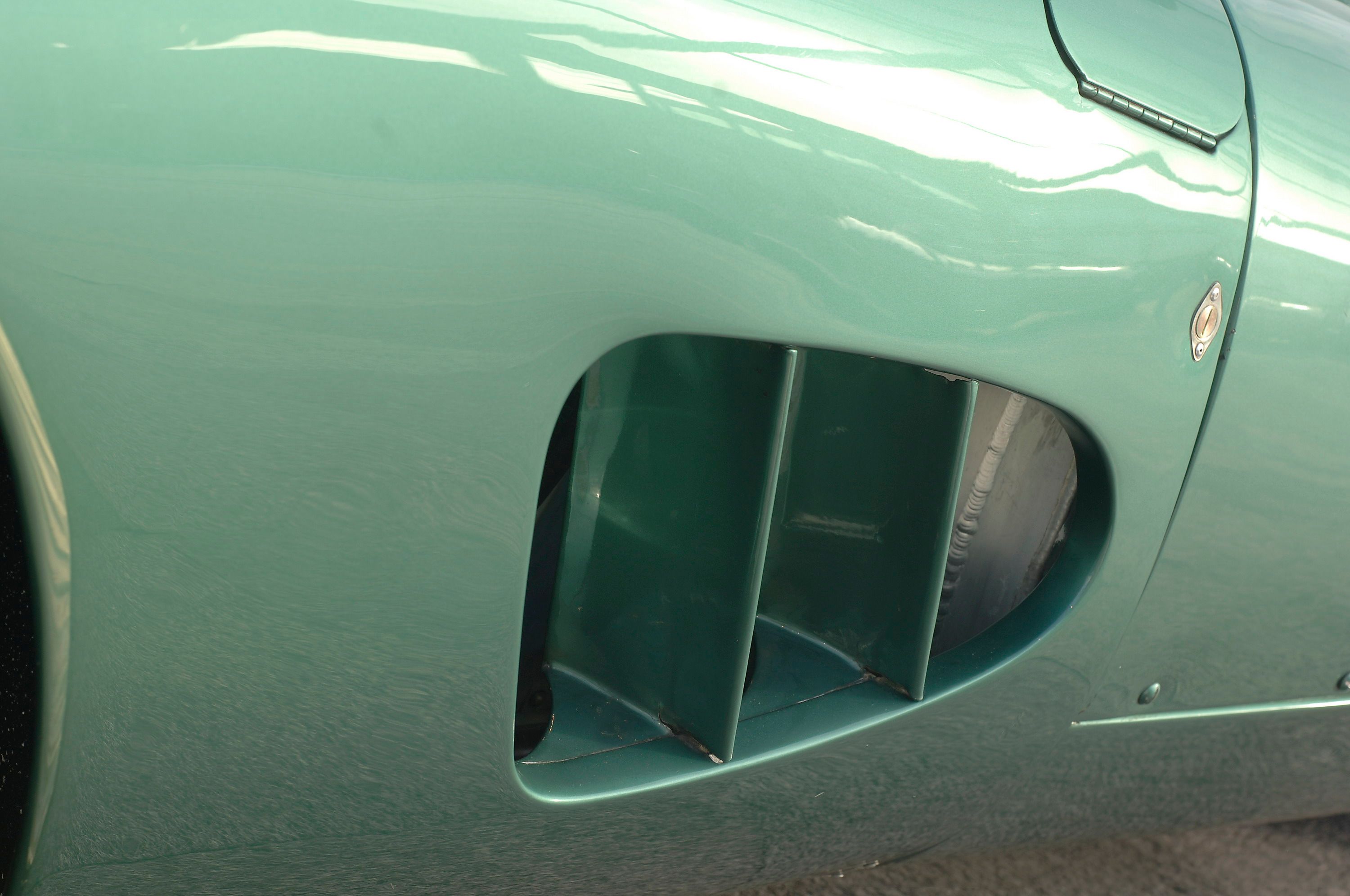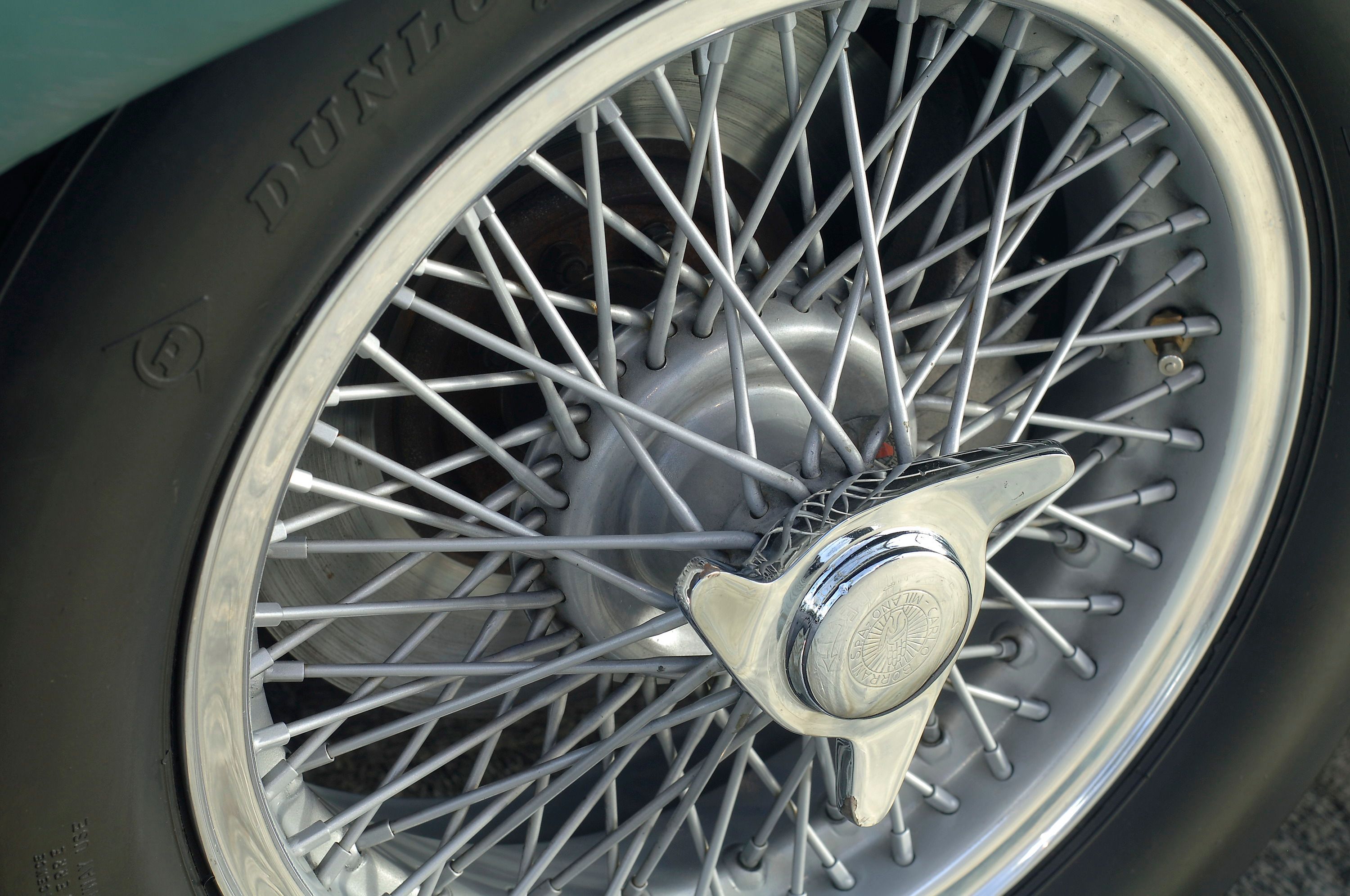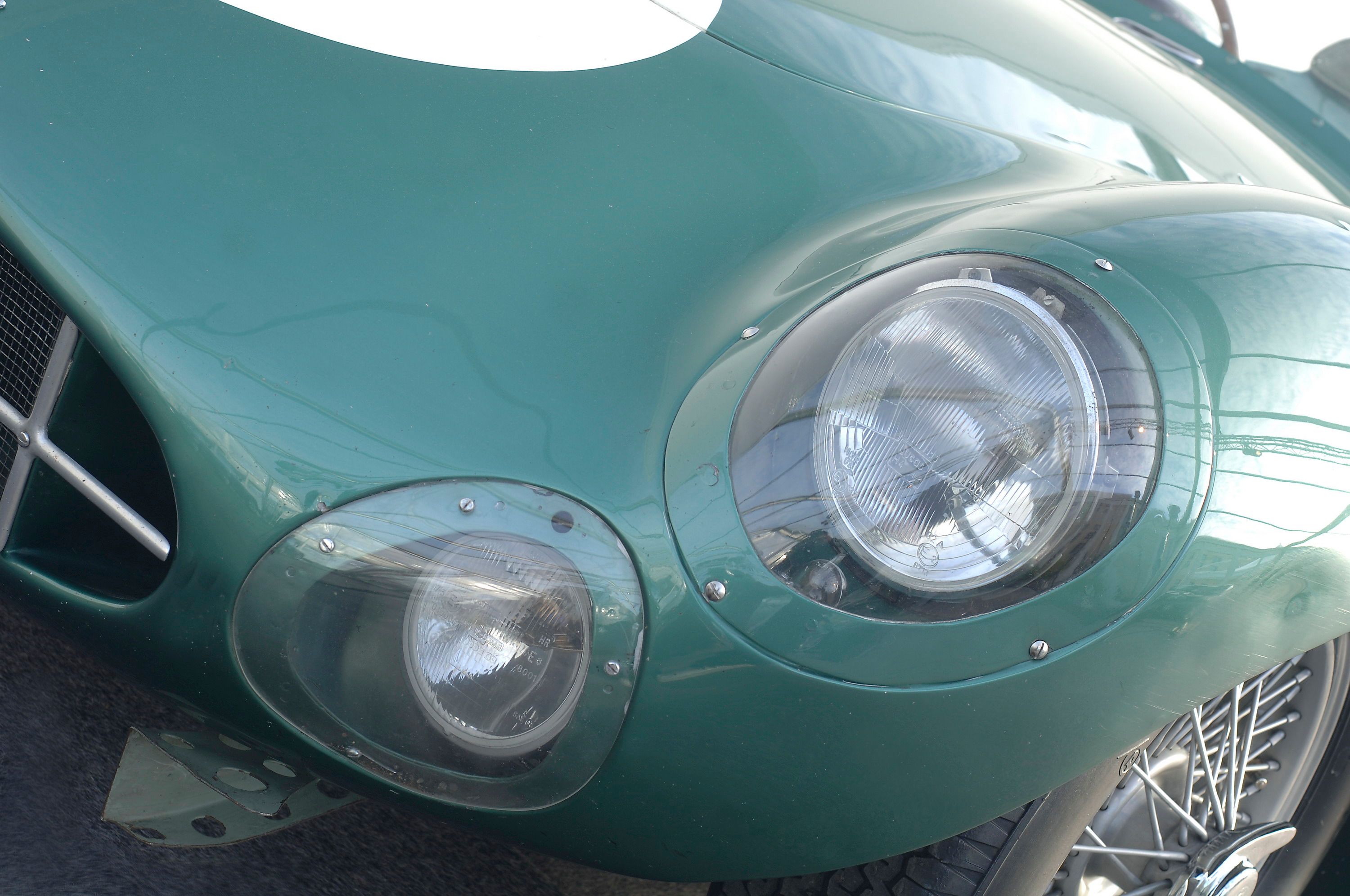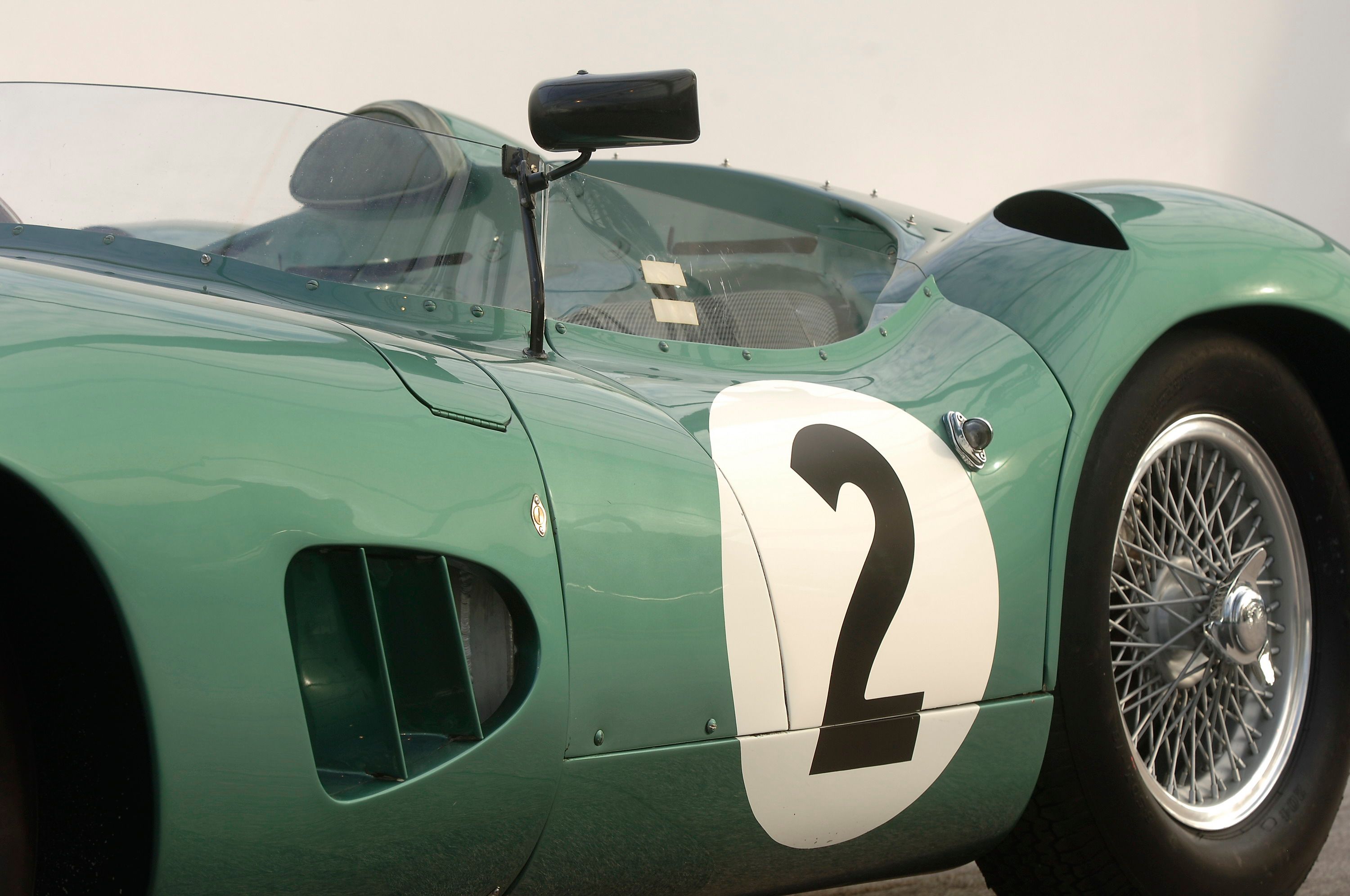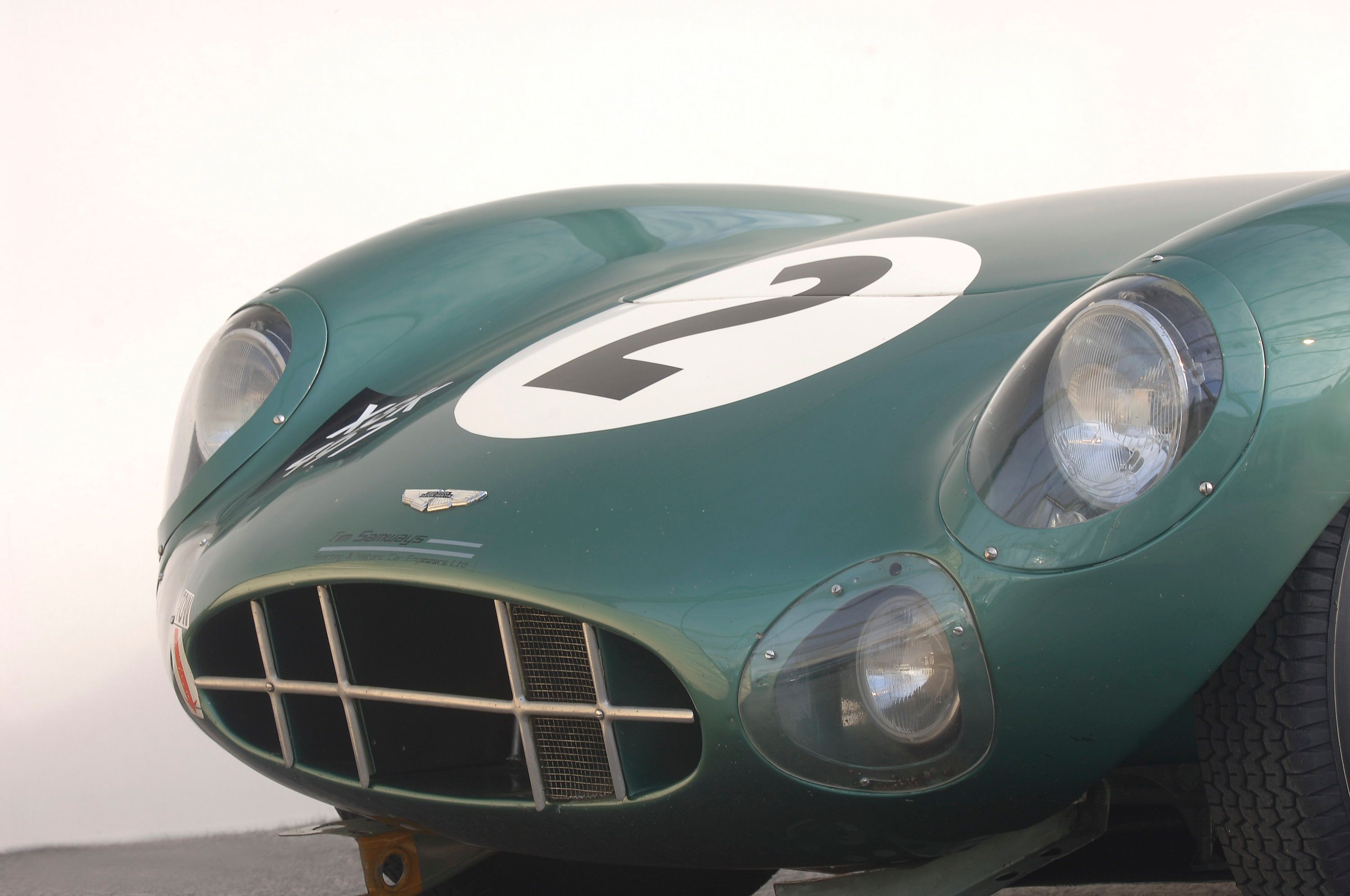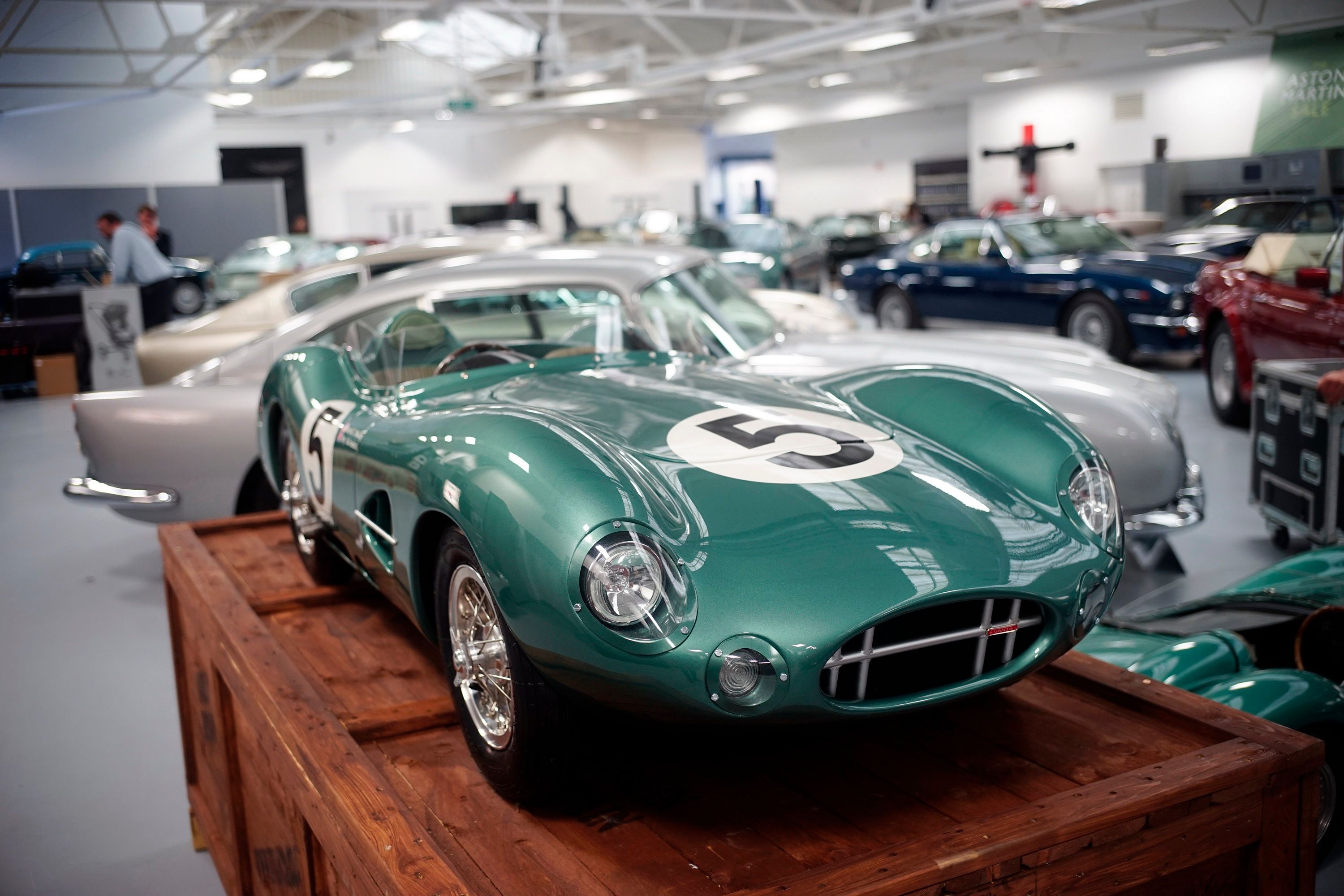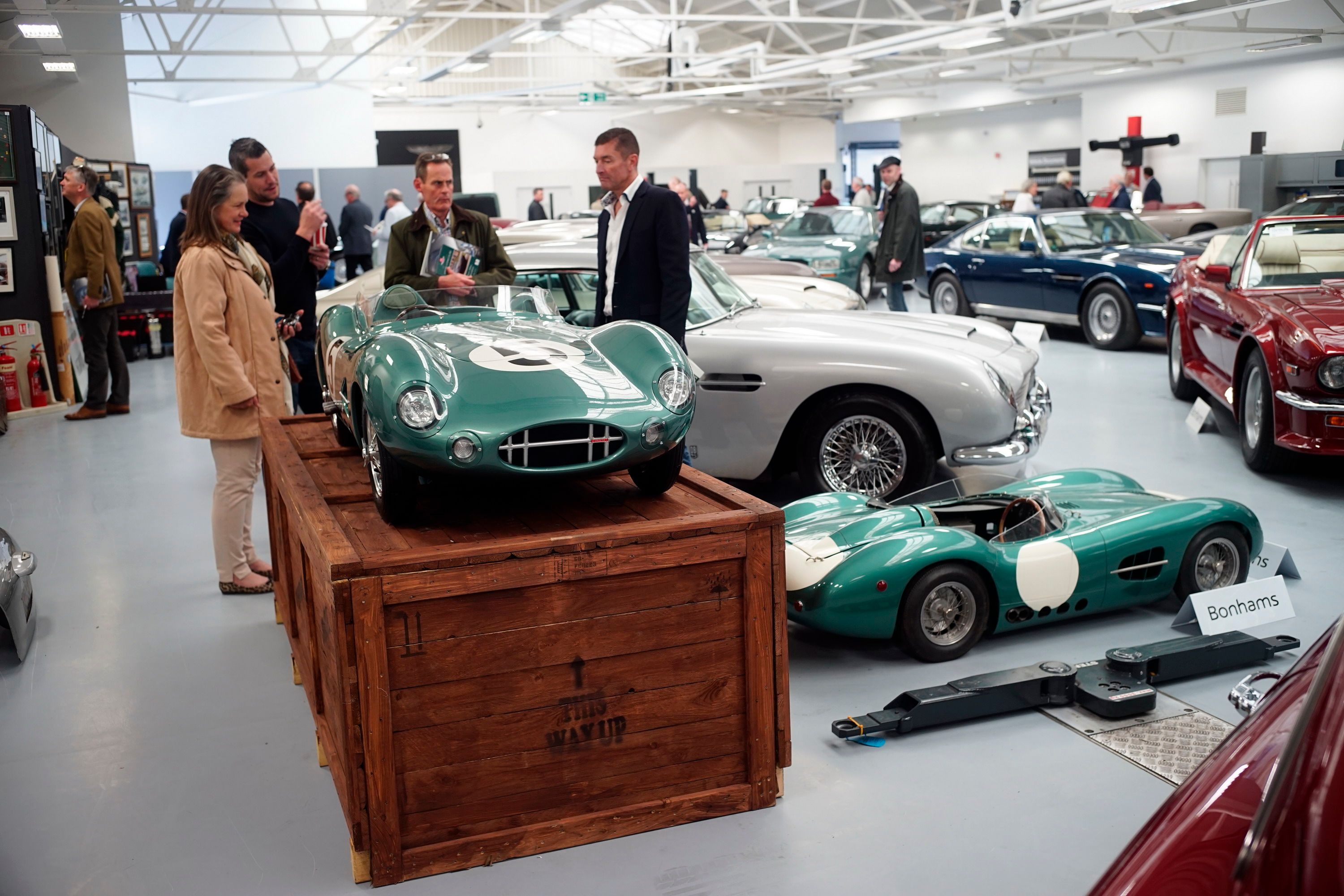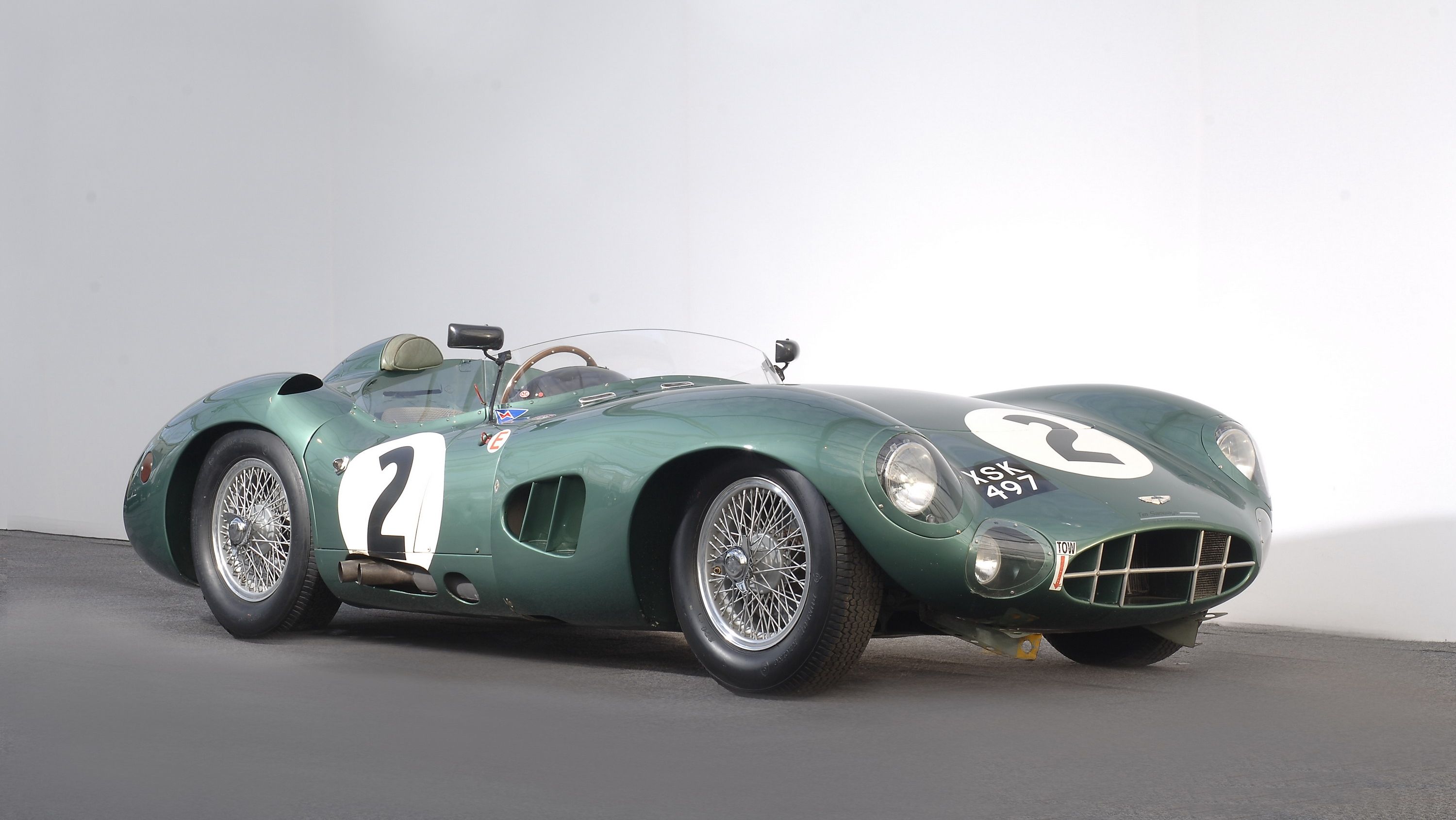Like many British carmakers, Aston Martin->ke13 came to life as a race car->ke148 builder. The Brits built their first vehicles in 1922, which went on to set world speed and endurance records at the Brooklands track, and later focused on road-going sports cars->ke506 and grand tourers. Struck by financial problems in the 1930s, Aston Martin shifted production to aircraft components during World War II. In 1947, tractor manufacturer David Brown Limited bought both Aston Martin and Lagonda->ke3711 bringing them under the same roof.
The David Brown era, which lasted until early 1972, was one of the most successful in Aston Martin history -- leading to the creation of the legendary DB series, which still exists through the DB9->ke210 and its upcoming successor. However, the road-going DBs weren't Sir David Brown's only achievements as managing director of Aston Martin. The entrepreneur also brought the British brand back to the race track by launching the DBR series in the early 1950s. More importantly, Brown approved the development of Aston Martin's only outright Le Mans->ke1591 winner to date.
The car in question is the DBR1, which went on to win the 1959 24 Hours of Le Mans, against stiff competition from V-12 powered Ferraris->ke252 and with none other than Carroll Shelby behind the wheel.
Continue reading to learn more about the Aston Martin DBR1.
aston-martin-dbr1
- Make: Array
- Model: aston-martin-dbr1
1956 - 1959 Aston Martin DBR1
- Make: Array
- Model: 1956 - 1959 Aston Martin DBR1
- Engine/Motor: inline-6
- Horsepower: 254 @ 6250
- Transmission: 5-speed manual
- [do not use] Vehicle Model: Array
Exterior
The DBR1 arrived in 1956, not long after the regulations for sportscar racing were changed to allow race cars that were no longer based on road-legal vehicles. As a result, the DBR1 was radically different from the DB3 and DB3S, which were loosely based on the DB2 coupe.
Penned by Ted Cutting, the engineer who also worked with John Wyer on the Ford GT40, the DBR1 was created on a clean sheet -- featuring a much lower profile than the DB3S and fully closed front fenders with large triangular vents. The latter would become a standard feature on all Aston Martins, evolving into the slimmer vents we now find on the Vantage->ke4410 and the DB9.->ke210
The styling itself was pretty much similar to other open-cockpit race cars of the era , like the Ferrari 250 Testa Rossa or the Jaguar D-Type. It had a long nose with a wide front grille, pontoon-style fenders, headlamps with lightweight plastic covers, a bulbous rear end, and a low windscreen. It wasn't particularly aerodynamic, but it was sleek and gorgeous. And unlike the Testa Rossa, which seemed heavy and ferocious looking, the DBR1 was rather stylish for a race car.
Exterior Dimensions
|
Length |
4,026 MM (158.5 Inches) |
|
Width |
1,626 MM (64 Inches) |
|
Height |
978 MM (38.5 Inches) |
|
Wheelbase |
2,286 MM (90 Inches) |
|
Track (fr/r) |
1,308 MM (51.5 Inches) / 1,308 MM (51.5 Inches) |
Interior
Like most 1950s race cars, the DBR1's interior was designed as a no-nonsense cockpit with exposed floor panels, spartan door panels, bucket seats, and a simple dashboard crowded with buttons and switches. The steering wheel had a wooden rim, which was a feature that would remain popular in race cars through the 1960s. Unlike contemporary Ferraris, which used leather-wrapped seats, the DBR1 had cloth units. The rollover hoop behind the driver's seat, on the other hand, had a leather headrest. Safety features were limited to seat belts, a rollcage bolted onto the floor, and a fire extinguisher. Much like any 1950s open-top race car, the DBR1 wasn't a safe place to be in the event of a high-speed crash.
Drivetrain
The DBR1 was initially fitted with a 2.5-liter, inline-six alloy engine based on the racing version of the Lagonda straight-six mill. Starting in 1957, the DBR1 received a larger 2.9-liter variant of the engine rated at 254 horsepower. Tipping the scales at only 1,765 pounds, the DBR1 with the 3.0-liter l6 had a power-to-weight ratio of 317 horses per tonne. Both units were mated to a five-speed manual transmission designed by David Brown.
Designed by Walter Owen Bentley in the early 1940s, the Lagonda six-cylinder was first used by Aston Martin in 1950 in the DB2. Several versions followed, finding their way into the DB3, DB2/4, and DB3S. Though it was replaced by the iconic 3.7-liter inline-six designed by Tadek Marek, the Langonda engine is credited with turning Aston Martin into one of the most popular manufacturer of sports and race cars.
The DBR1's suspension system consisted of a torsion bar and trailing arms at the front, and a De Dion unit with longitudinal torsion bars and Watt linkage at the rear.
Drivetrain Specifications
|
Configuration |
Straight 6 |
|
Location |
Front, longitudinally mounted |
|
Construction |
alloy block and head |
|
Displacement |
2,992 cc / 182.6 cu in |
|
Bore / Stroke |
84.0 mm (3.3 in) / 90.0 mm (3.5 in) |
|
Compression |
9.3:1 |
|
Power |
254 HP @ 6,250 RPM |
Prices
Aston Martin built five DBR1s between 1956 and 1959 and none of them were sold to the public. However, when David Brown decided to withdraw the brand from sportscar racing to focus on Formula One, four cars were sold off to privateers. How much those privateers paid for the race cars remains unknown.
Nowadays, the surviving DBR1s, which are either in museums or private collections, are estimated to worth millions of dollars. In 2012, chassis DBR1/2 driven by Carroll Shelby and Roy Salvadori to victory at Le Mans was put up for sale for £20 million (about $30.6 million as of October 2015).
Racing Career
The DBR1 made its racing debut at the 1956 24 Hours of Le Mans. Driven by Tony Brooks and Reg Parnell, the 2.5-liter-powered DBR1 retired due to gearbox failure during the race's final lap.
In 1957, the race car made a full debut in World Sportscar Championship. After scoring second places at the British Empire Trophy and Sussex Trophy at Goodwood with the 2.5-liter engine, the upgraded 3.0-liter car took its first win at the Spa Francorchamps. Its first major victory came at the 1000km of Nurburgring. At the 1957 24 Hours of Le Mans, both DBR1s fielded by David Brown failed to finish.
The Brits had a poor start in the 1958 season, with the DBR1 retiring from gearbox failures at both the 12 Hours of Sebring and the Targa Florio. However, Aston did manage to win at the Nurburgring again and score a 1-2-3 finish at the Tourist Trophy. The DBR1s Le Mans campaign was once again unsuccessful, with all three cars failing to finish. But, despite failing to score points in four events, Aston Martin took second place in the constructors' championship behind Ferrari.
Aston Martin returned to the track in 1959 with two more chassis, now being able to use up to four cars. The sole DBR1 entry failed to finish at the 12 Hours of Sebring, but the Brits made a comeback at the 1000km of Nurburgring by winning the race for the third consecutive time. The DBR1's most resounding success came at Le Mans, where Carroll Shelby and Roy Salvadori took the checkered flag ahead of teammates Maurice Trintignant and Paul Frere, defeating a pack of Ferrari 250 GTs by more than 25 laps. The DBR1 went on to win the final round at Goodwood and secure the championship over Ferrari, as well as Aston Martin.
Even though the company withdrew from sports car racing at the end of 1959, the DBR1 continued to race in privateer hands until 1962, appearing at Le Mans in both 1960 and 1961.
Overall, the DBR1 was entered in 73 races, scoring nine outright wins. Notable drivers included Roy Salvadori, Tony Brooks, Stirling Moss, Graham Whitehead, Carroll Shelby, Jim Clark, and Jack Brabham.
Competition
Ferrari 250 Testa Rossa
The 250 Testa Rossa was introduced in 1957 and was the DBR1's main competitor that year. Raced in the same class, the Ferrari had a 3.0-liter V-12 under the hood, mated to a four-speed manual transmission. Unlike the DBR1, the Testa Rossa failed to win any of the races it entered in its first year and failed to finish at Le Mans. In 1958, however, the Ferrari had a tremendous season, securing wins at Le Mans, 1000km Buenos Aires, 12 Hours of Sebring, and Targa Florio, among other non-championship events. The 250 TR remained competitive until the mid-1960s, scoring 83 outright wins in more than 500 events.
Read more about the Ferrari 250 Testa Rossa here.
Jaguar D-Type
With three consecutive wins at Le Mans between 1955 and 1957, the D-Type was the car to beat in the mid-to-late 1950s. Unlike the 250 TR and the DBR1, the D-Type was also offered as a customer car, with Jaguar selling 53 examples to privateers in addition to building 18 factory team unit. Powered by 3.4- and 3.8-liter inline-six engines, the D-Type competed in the top prototype class with little competition from Ferrari or Maserati. Retired from racing in 1965, the D-Type was raced in more than 1,000 events, scoring no fewer than 162 outright wins.
Find out more about the Jaguar D-Type here.
Conclusion
As Aston Martin's main victor at the 24 Hours of Le Mans and in the World Sportscar Championship, the DBR1 is arguably the most iconic racer the British brand built so far. Sure, its career wasn't as prominent as the 250 TR's and D-Type's, but judging by the fact that Aston built only five chassis, the DBR1 has some impressive achievements to brag about. The fact that it was driven by the most talented and successful drivers of the late 1950s also adds to its awe-inspiring heritage. It's no wonder that it is one of the very few British cars that's estimated to worth as much as a classic Ferrari.


